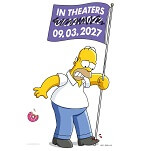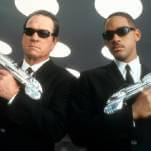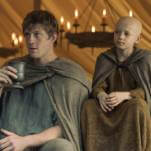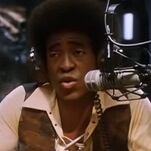When magician Harry Blackstone learned that his longtime rival Howard Thurston had died, he retreated into his dressing room and cried. Blackstone had stolen one of Thurston’s best tricks for his own act, and longed to seize Thurston’s title as the world’s most famous magician, but he still mourned the passing of an honorable rival.
Since his death in 1936, Thurston has fallen into obscurity, but magic historian and illusion designer Jim Steinmeyer puts him back in the spotlight in The Last Greatest Magician In The World: Howard Thurston Versus Houdini & The Battles Of The American Wizards. The author of The Glorious Deception and Hiding The Elephant has a low opinion of Houdini, arguing that he eclipsed Thurston’s fame in death as he never could in life by basing his career on memorable daredevil feats. Steinmeyer notes that the stories of his escapes proved better than his actual act, which amounted to waiting around for Houdini to get himself out of a locked cabinet, then listening to a venomous lecture on the deceptions of false mediums. Thurston truly was the greatest magician of his time, boasting a massive traveling show that toured around the world and played for European royalty and American presidents.
Steinmeyer’s research digs through the myths about Thurston to paint an accurate biography that shows the internal conflicts troubling the great magician. While he projected a gentlemanly, even ministerial presence onstage, he received his earliest training in sleight of hand as a pickpocket in a New York street gang. He spent much of his early career traveling with sideshows and carrying around cheap watches he could use as bribes, skipping town before anyone could discover his con.
Last Greatest Magician reads like a non-fiction version of The Prestige, packed with stories of rival magicians using all manner of subterfuge to learn each other’s tricks and advance their own careers. Steinmeyer provides detailed descriptions of some of the most remarkable tricks to come out of the illusionist arms race, showing how the latest technologies, like film, electric lights, and automobiles were integrated into the acts, and explaining the origins of magic-show staples like sawing a woman in half. Knowing how the tricks are done only makes them more impressive by showcasing the inventors’ ingenuity and Thurston’s ability to weave narratives around his tricks to create amazing shows.
In the end, technology also proved to be Thurston’s downfall. America fell into the Great Depression, and increasingly sophisticated and widely available movies provided more affordable entertainment than the great magician’s elaborate shows, where a single trick could cost $10,000 to produce. Steinmeyer argues that no matter how sophisticated movie technology may become, magic will never die. Thurston may have been forgotten, but The Last Greatest Magician In The World ably resurrects his legend and his awe-inspiring magic.









































